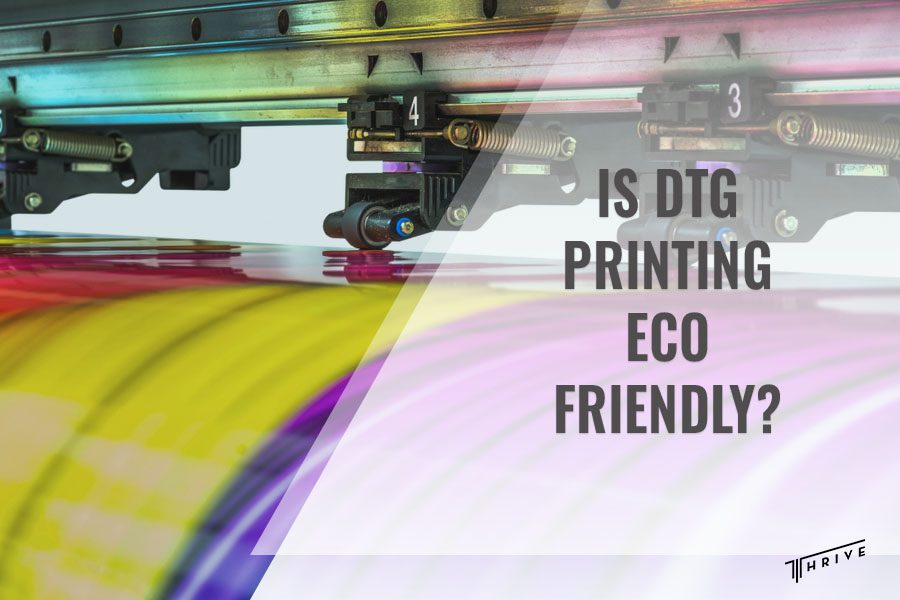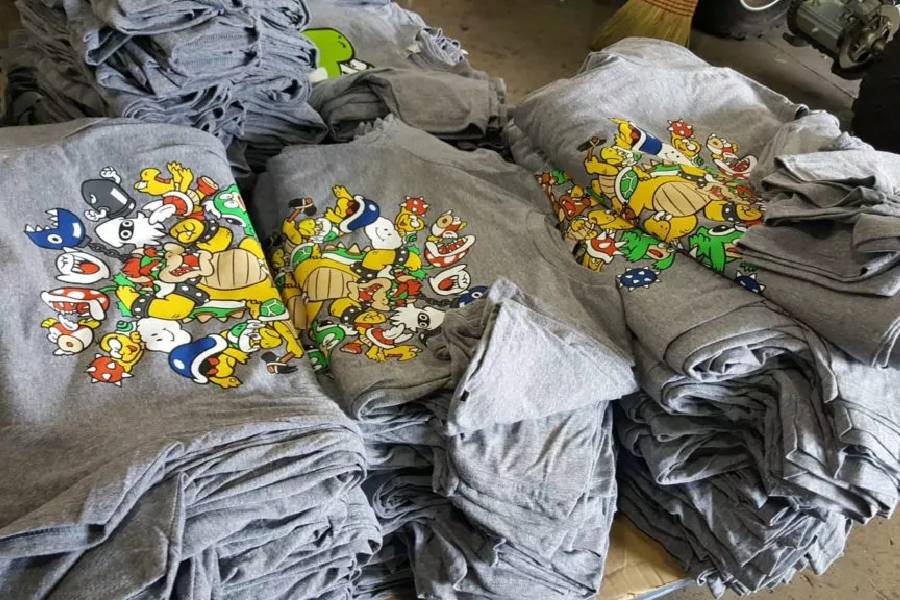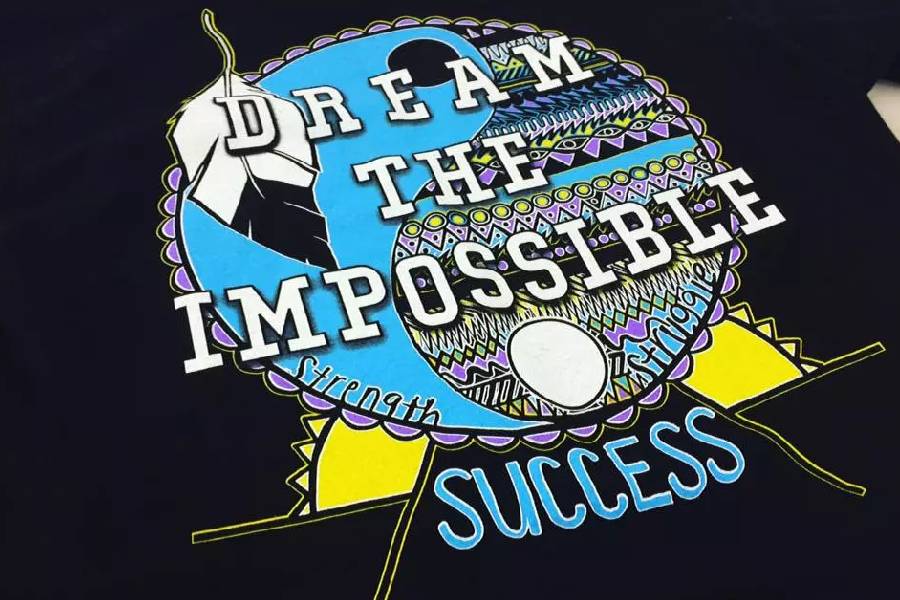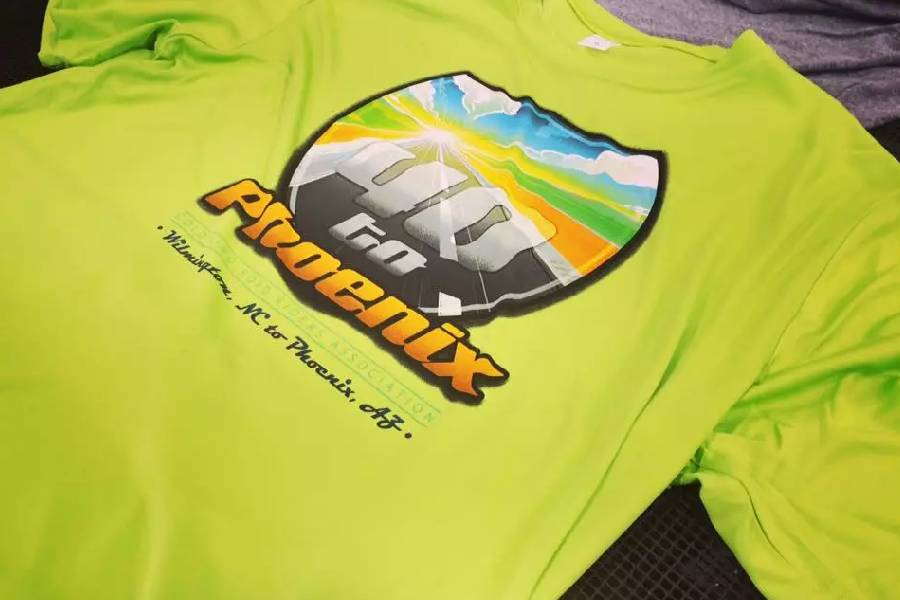
Direct-to-garment printing is a new innovation in the custom apparel industry. It has introduced a modern technique for creating unique and personalized designs. But is DTG printing eco-friendly?
This printing method is revolutionary because it requires the use of water-based inks that are deemed sustainable. There is a growing demand for ethical practices in printing. So, let’s learn about the environmental impact of DTG printing.
Is DTG Printing Eco-Friendly?
DTG printing is a sustainable option for garment personalization. The machines used in this technique don’t contain harmful chemicals that can be transferred to the garments and released into the environment.
DTG printers are also designed to minimize waste and reduce excessive water usage, which benefits the environment. But it also helps an eco-friendly contract DTG printing service like ours save on costs. So, we may say DTG is an eco-friendly technique.
Thus, let’s examine the features of DTG printing that make it better for the environment. Below, we also mention the environmental impact of screen printing and how it differs from direct-to-garment printing in terms of sustainability.

Environmental Impacts of Printing With DTG
Reducing waste
DTG printing is usually carried out automatically. It requires minimum user handling while creating consistent and high-quality prints. All garments during production come out identical. So, there is a limited chance of producers making a mistake.
This way, we minimize fabric and ink waste and keep up with the standards for eco-friendly processes. Our DTG printers regulate ink waste during the cleaning process. This is to protect the environment from pollution and unnecessary waste.
Minimizing labor-intensive efforts
Many areas worldwide struggle with the negative impact of fast fashion. For this reason, companies are encouraged to reduce production time. By introducing sustainability, they must also eliminate low-quality working conditions, low pay, and even child labor.
DTG printers are very easy to operate since they have automatic features. Thus, the workers are not required to do any hard physical labor during the production of DTG prints. Instead, this printing method is an opportunity for producers and consumers to make more ethical choices.
Lowering costs
More than 100 billion garments are produced worldwide every year. Most of these garments are made from materials that take years to decompose, creating textile waste. Brands constantly create new pieces of clothing following current trends.
However, trends are constantly changing, and there is an increasing demand for speedy production. So, it can be costly for the business and exhausting for employers. But many wonder about the environmental impact of screen printing and whether it can lower production costs and focus only on creating valuable pieces.
With DTG printing, we run each garment through a printer that is connected to a computer. So, we don’t need to create separate screens to replicate the designs properly or waste money on a specific setup. The design is printed directly onto the garment quickly and efficiently.
Using water-based inks
We use water-based inks when creating DTG prints because it’s biodegradable and easy to clean. This type of ink is also plastic-free and doesn’t contain dangerous or toxic chemicals that may evaporate in the air over time.
We consider water-based inks more eco-friendly than other types of inks and dyes. This is because they contain natural pigments and environmentally friendly additives.

Preventing water waste
The custom apparel and fashion industry generally produces a lot of water waste and greenhouse gas emissions. But this waste can be prevented by using the right printing method.
With DTG printers, we apply the ink to the shirts directly, which doesn’t require a lot of water. This process differs from screen printing, which requires washing the screens and materials.
The digital technology in our eco-friendly equipment allows us to create high-quality prints without using water and dyes. This way, we can support sustainable practices such as water conservation while still having the option to mass-produce personalized apparel.
Producing consistent prints
Another way of reducing textile waste with DTG printing is by producing consistent prints. We can create clothing pieces with similar qualities with this printing method. They usually have an identical appearance. This way, discarding garments with mistakes is successfully prevented.
Also, DTG allows us to print our clients’ designs on full-color garments or exactly how they look on camera, phone or computer screen. The final designs are never grainy with this printing technique, making them high in quality.
Screen printing is another method known for providing print consistency. Yet, the designs with this technique are done manually. So, the chances of making a mistake are higher than with DTG printing.
Screen printing has many variables, which may cause various differences in the final print. However, DTG printing requires the use of digital files and prints, leading to the production of consistent prints without variables.
Using natural fibers
DTG printing is a versatile technique. It allows us to use it with a wide spectrum of fabric types. Although it works on synthetics and blends, it performs better on natural fibers. These include cotton, linen, hemp, and leather. 100% cotton is one of the most sustainable materials for direct-to-garment printing.
Polyester and other synthetic fibers are not as biodegradable as natural fibers. Thus, when synthetic materials are washed, they release microfibers into the environment. This makes the process less sustainable than DTG printing of natural fabrics.
Creating customizable designs
The possibilities of creating various customizable designs with DTG printing are endless. Thanks to our printing equipment and team of professionals, we can provide businesses the opportunity to add detailed and unique designs to their garments.
Also, complex designs are faster and easier to make with DTG printing than any other printing method. Our digital printers can create colorful designs on T-shirts or similar promotional products to make them stand out with their intricate design.

Conclusion
Many businesses have recently become more environmentally aware and focused on creating sustainable products. Thus, is DTG printing eco-friendly?
We explained that direct-to-garment printing is an ethical and environmentally conscious choice. It uses water-based inks and other sustainable features, reducing water usage.
As part of the printing industry, we prioritize eco-friendly practices and considerations to ensure a more responsible approach to garment production. By using DTG printing, we also highlight our ethical values to create a better future for this industry.

Robert Fisher is the founder and CEO of Thrive Screen Printing and brings extensive experience in the screen printing and fulfillment industry.

